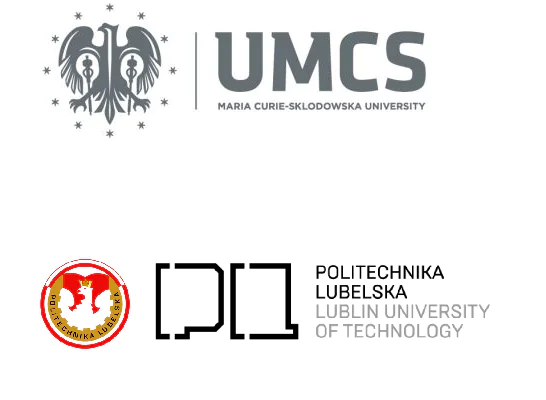Lublin Info Centre
International city powered by students

In recent years, we have noticed a growing number of foreign students who have started studying at one of the nine universities and colleges in Lublin. The process of internationalisation is crucial not only to the academic community, but also to the city itself and its citizens. That’s why it is so important for us to support activities of our universities and research institutions. Results of the joint analysis allow us to plan directions for further development of our collaboration, including projects like “Study in Lublin”, “Visiting Professors in Lublin” or “Academic Lublin” in the new perspective of our Lublin Development Strategy 2030. It is also significant for our activities within the European Youth Capital and creating a city in line with the needs and expectations of young people, says Mayor of Lublin Krzysztof Żuk.
The project “Analysis of the influx of students to Lublin” was carried out between April 2021 and October 2022, and involved over 20 people, including representatives of the Lublin City Hall, local universities, but most of all students of maths, geography and geoinformatics who wanted to gain work-like experience before entering the local labour market. The analysis was based on data provided by Lublin’s public universities covering the academic years 2011/2012-2020/2021.
Where do they come from?
Between 2011 and 2020 Lublin welcomed a total of 220,000 students from Poland. Over 72% of them came to Lublin from Lubelskie Region, 9% from Mazowieckie, more than 7% from Podkarpackie and almost 5% from Świętokrzyskie. On the other end, the smallest number of students came from Lubuskie (0.1%), Opolskie (0.11%) and Zachodniopomorskie (0.16%). What’s more, during the period under scrutiny Podkarpackie Region boasted the highest share of female students enrolled in Lublin (70.47%).
When it comes to foreign students in the city, the two countries that clearly stand out are Ukraine and Belarus, which is understandable taking into account the proximity of the two states. Other countries from which the largest numbers of students came to study in Lublin between 2011 and 2020 include Taiwan, Nigeria, Saudi Arabia, United States, Thailand and Italy. Out of these countries, the highest share of female students was recorded for Thailand (74.31%), while the lowest one for Nigeria (12.21%).
According to figures delivered by the local universities, in the academic year 2021/2022 Lublin was home for 64,977 students (growth of over 4,000 y-o-y), including 8,289 foreigners. As a result, the internationalisation ratio of Lublin-based universities has reached almost 13%, placing Lublin among top Polish cities in this regard.
Most popular fields of study over the last decade
The conducted analysis has shown that the largest number of domestic students chose programmes from the area of Business, administration & law as well as Technology, industry & construction. On the other hand, foreigners selected fields of study related to Health and social care, which has recently made Lublin an international centre of medical education and services, but also an important centre of expertise in this field.
An upward trend was observed in the number of freshmen admitted to programmes representing ICT and services, which results from the fact that over the last decade Lublin has become one of the largest IT hubs in Poland, and at the same time one of the most attractive sites for locating IT and business services companies. This is also due to universities, which keep on adapting their educational offer to the real needs and perspectives of the local labour market.
The report was drawn up by members of the Adam Malicki Students’ Scientific Circle of Geographers from Maria Curie-Skłodowska University (UMCS) under the supervision of Piotr Demczuk, PhD, in collaboration with the “Kwaternion” Students’ Scientific Circle at Lublin University of Technology supervised by Ewa Łazuka, PhD, professor of the university. Results of the first stage of the project are available at www.student.lublin.eu. A web application allowing for the visualisation of the origin of freshmen enrolled in Lublin between 2011/2012 and 2020/2021 has been developed by members of the “GeoIT” Students’ Scientific Circle of Geoinformaticians at UMCS, also under the watchful eye of Piotr Demczuk, PhD. Outcomes of the second project phase have been published at www.analizy-akademickie.lublin.eu.







